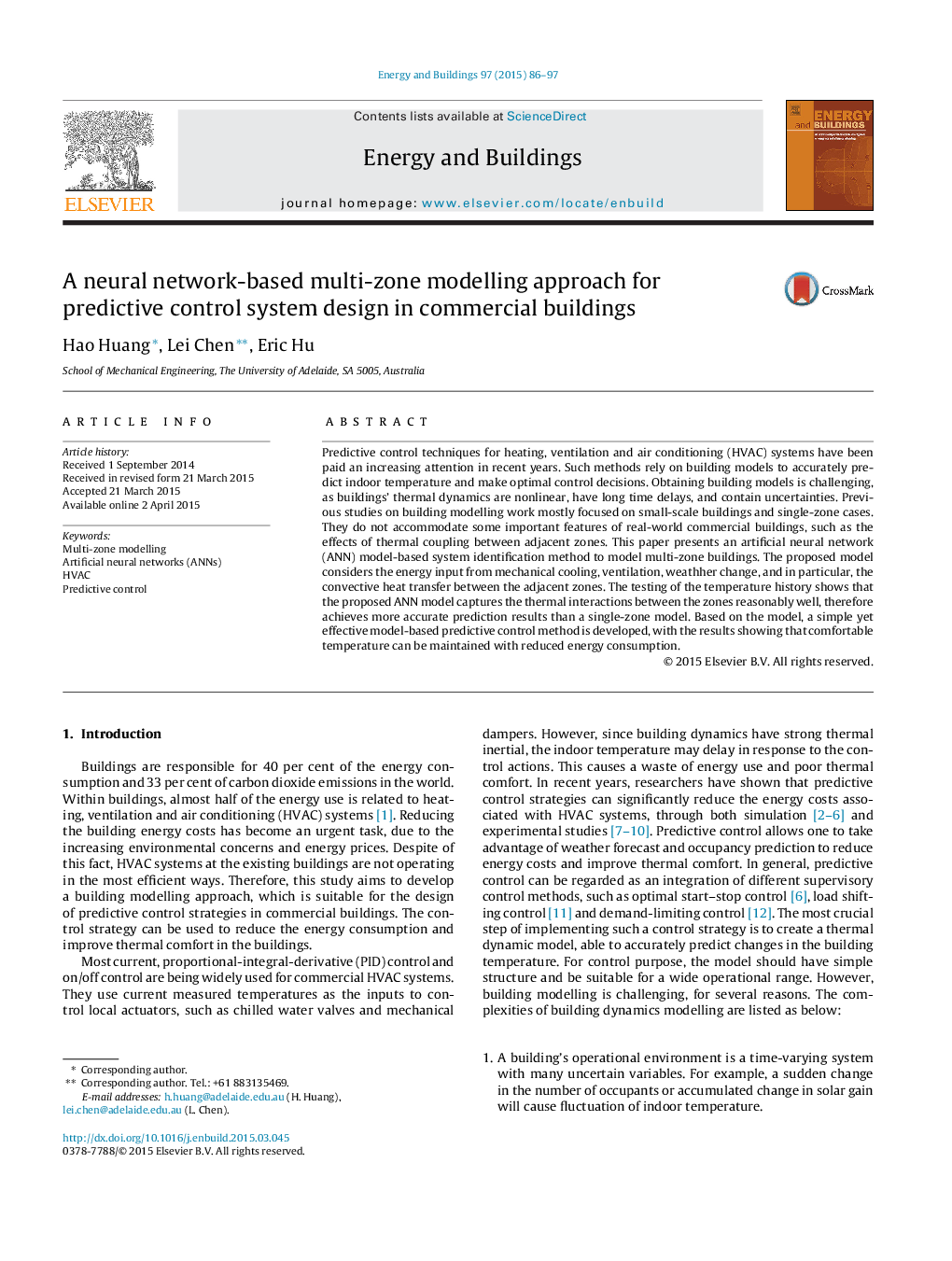| کد مقاله | کد نشریه | سال انتشار | مقاله انگلیسی | نسخه تمام متن |
|---|---|---|---|---|
| 262472 | 504034 | 2015 | 12 صفحه PDF | دانلود رایگان |
• Proposes an ANN-based temperature modelling method for multi-zone buildings.
• ANN model performs accurate prediction with low input orders.
• Considering convective heat transfer between the zones improves prediction accuracy, thereby benefits predictive control.
• The energy saving due to the use of optimal start–stop control is significant.
Predictive control techniques for heating, ventilation and air conditioning (HVAC) systems have been paid an increasing attention in recent years. Such methods rely on building models to accurately predict indoor temperature and make optimal control decisions. Obtaining building models is challenging, as buildings’ thermal dynamics are nonlinear, have long time delays, and contain uncertainties. Previous studies on building modelling work mostly focused on small-scale buildings and single-zone cases. They do not accommodate some important features of real-world commercial buildings, such as the effects of thermal coupling between adjacent zones. This paper presents an artificial neural network (ANN) model-based system identification method to model multi-zone buildings. The proposed model considers the energy input from mechanical cooling, ventilation, weathher change, and in particular, the convective heat transfer between the adjacent zones. The testing of the temperature history shows that the proposed ANN model captures the thermal interactions between the zones reasonably well, therefore achieves more accurate prediction results than a single-zone model. Based on the model, a simple yet effective model-based predictive control method is developed, with the results showing that comfortable temperature can be maintained with reduced energy consumption.
Journal: Energy and Buildings - Volume 97, 15 June 2015, Pages 86–97
